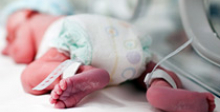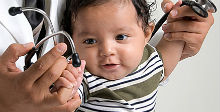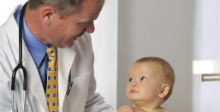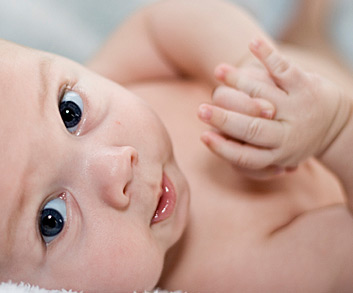Internal mini form
Contact Us Today
Many events in life can have an effect on the human body – both in the father and the mother – such as parental health, socio-economic conditions, age, medical history, social habits and toxins. Learn which ones can become risk factors for the development of Cerebral Palsy.
What parental health concerns and habits can increase the risk of Cerebral Palsy?
Many events in life can have an effect on the human body. Factors — in both father and mother — such as parental health, socio-economic conditions, age, medical history, social habits, and toxin exposure can exist prior to conception, yet still become risk factors for development of Cerebral Palsy. Additional risk factors may arise for women during pregnancy and delivery.
A few of the parental health and habit risk factors include:
- Parental age
- Maternal height and weight
- Reproductive fitness
- Maternal health
- Exposure to toxins before conception
- Socio-economic factors
Parental age
Age is a risk factor for Cerebral Palsy in men and women younger than 18 and older than 35. Women under 18, especially those under 15, have a higher occurrence of preeclampsia (high blood pressure during pregnancy), preterm labor, anemic babies, and low birth weight children. A girl 15 or under is not yet complete in her own anatomical or physiological development and is therefore considered biologically immature. Teen mothers are also likely to have poor access to health care, are prone to poverty, and may not follow prenatal care standards. A teen mother is at risk for health-related complications; her newborn infant is at risk for poor birth outcomes.
According to March of Dimes statistics, one in five women have their first child after the age of 35, and most are born healthy. However, men and women over 35 are more likely than their younger counterparts to have health problems or gene mutations that may affect conception and pregnancy. Men and women over 35 are more likely to:
- have a miscarriage
- have multiples
- have developed health issues which may affect pregnancy, such as gestational diabetes and high blood pressure
- have developed gene mutations which may affect development
- have pregnancies with intrauterine growth restriction
- cause premature birth
- use fertility drugs which increase the chances of multiples
Advanced paternal age is also a risk factor. As a man ages, it becomes more likely his children will be born preterm. A man 45 and older is four to five times more likely to have gene mutations that affect his children than a man in his early 20s.
Height and weight
The height and weight of a pregnant woman can make delivery more complicated. Women under 100 pounds before pregnancy are likely to have low birth weight children. Women under five feet tall may have a smaller pelvis and cervix, which can complicate the birthing process.
Obese women are more likely to have larger babies, require caesarian sections, and deliver past 42 weeks gestation. Obesity makes a pregnant woman more prone to conditions such as gestational diabetes, high blood pressure, and preeclampsia.
Reproductive fitness
Various aspects of reproductive health can influence development of the fetus and help identify risk factors for Cerebral Palsy. Fertility drugs, which, by use may indicate that reproductive health concerns already exist, increase likelihood of multiples, low birth weight babies, and premature delivery.
Abnormalities of the cervix can result in placental complications such as abruption; a very serious condition for both mother and child. Cervical issues of concern include:
- malformations
- cysts and/or polyps
- infections often caused by bacteria, viruses, and sexually transmitted diseases
- cervical cancer and cancer treatments
- endometriosis
- incompetent cervix that may prematurely open
Likewise, complications of the uterus can lead to complicated deliveries and placental problems, such as placental abruption and placenta previa. Uterine adhesions, malformations, infection, abnormal fetal positioning, miscarriage, and fibroids are considered risk factors.
Previous difficult pregnancies also increase likelihood of Cerebral Palsy. Previous difficulties often present in subsequent pregnancies and therefore should be discussed with a doctor before conception and during subsequent pregnancies. These can include:
- preterm delivery
- post-term deliviery
- under weight babies
- overweight babies
- previous birth defects
- miscarriages
- stillborn birth
Women with diabetes tend to give birth to newborns weighing more than 10 pounds.
A woman who has had a child with a genetic disorder or birth defect in a previous pregnancy is at higher risk to give birth to another child with similar conditions. In the case of a genetic abnormality, birth defect, or stillbirth, tests such as high-resolution ultrasonography, genetic testing, chorionic villus sampling, and amniocentesis may help to determine whether the fetus has a genetic disorder or birth defect. If so, the woman may be referred to a high-risk pregnancy specialist, or monitored and treated accordingly.
Maternal health
The mother’s health is especially important to development of the fetus. Both current and past health problems should be discussed with a doctor. Some conditions require management during conception, pregnancy and delivery. Infections, especially rubella and the chicken pox virus, along with thyroid conditions and fever, can be particularly serious.
Chronic health issues are known risk factors and should be taken into account. They include:
- autoimmune disorders
- cancer
- Cerebral Palsy
- diabetes
- heart disease
- high blood pressure
- hypoglycemia
- hyperthyroidism (thyroid gland produces too much hormones)
- hypothyroidism (thyroid gland doesn’t release enough hormones)
- intellectual impairment
- kidney problems
- respiratory diseases
- seizures
- sexually transmitted diseases (HIV, syphilis, herpes simplex virus)
- thyroid
Exposure to toxins
Toxins are consumed voluntarily and involuntarily; with knowledge and without. Fathers and mothers can be exposed to toxins before conception. While pregnant, mothers should become aware of harmful toxins so they may be avoided. If exposed, the mother should report exposure to her doctor as soon as possible.
Substances that can negatively affect fetal development and increase the likelihood of birth defects are known as teratogens. Various factors — such as dosage, timing of exposure, and the toxin’s ability to accumulate in the body — determine the teratogen’s level of influence.
Researchers and various industry experts continue to debate and refine the list of known teratogens, which includes but is not limited to:
- alcohol intake
- cadmium
- cigarette smoke
- contaminated soil
- illegal drugs
- lead
- mercury
- pesticides
- herbicides
- pet feces or careless handling of cat litter
- raw or undercooked foods
- herbal/dietary supplements
- over-the-counter medications
- toxoplasmosis
Some prescription drugs are also considered teratogenic. Doctors and pharmacists should be consulted on prescription drug safety. Some categories of concern include:
- ACE inhibitors
- acne medications
- antibiotics
- antidepressants
- blood thinners
- hormones
- seizure medications
- thyroid medications
The use of prescription drugs or over-the-counter medications, along with the potential for subsequent side effects on conception and on pregnancy, should be discussed with a doctor.
The brain continues to develop 2-5 years after birth, making exposure to toxins such as cigarette smoke, cleaning solutions, and pesticides harmful to the growing child’s development, as well.
Parents who have undergone radiation treatments such as chemotherapy, radiation or cancer treatments may have also been exposed to dangerous toxins.
- Chemotherapy
- Radiation
- Cancer
Socio-economic factors
Certain issues of economic and social standing increase the likelihood of a child developing Cerebral Palsy. Lack of access to health care, lack of insurance coverage, and lack of prenatal care are socio-economic factors that can create risk during pregnancy. In some instances, access to advanced technology and diagnostic procedures during pregnancy and delivery may be helpful. After birth, neonatal intensive care units can increase survival rates for infants in need, especially those with jaundice and those born prematurely.
Low income and lack of education are also socio-economic factors linked to an increased risk of Cerebral Palsy. Some believe unemployment, low income, lack of education, and/or low social class can lead to limited access to appropriate medical care. Communities worldwide now recognize this correlation and have instituted programs to help women gain appropriate access to health care, health care facilities, and high-risk pregnancy care.
Were you or your child at risk – before, during or after your child’s birth?
Cerebral Palsy risk factors are events, substances or circumstances that increase the chances of a child developing Cerebral Palsy. They can be avoidable, or unavoidable. A risk factor does not ensure a child will develop Cerebral Palsy; it means chances are higher than if that risk factor was not present. Likewise, the absence of risk factors does not ensure that a child will not develop Cerebral Palsy. Have you been exposed to the following risk factors?
- Cerebral Palsy Risk Factors
Types of risk factors:
- Asphyxia and oxygen deprivation
- Blood type incompatibility or jaundice
- Complications of birth
- Infection
- Intrauterine growth restrictions
- Multiple births and infertility drugs
- Parental health and habits
- Placenta complications
- Premature birth
- Traumatic brain damage
Risk factors vs. risk factor causal pathways
A risk factor does not ensure a child will develop Cerebral Palsy; it means chances are higher than if that risk factor was not present. Likewise, the absence of risk factors does not ensure that a child will not develop Cerebral Palsy.
- Risk Factors and Risk Factor Causal Pathways
The Cerebral Palsy Risk Factor Checklist
Any exposure to risk factors prior to conception and during pregnancy should be immediately discussed with a doctor in order to treat and minimize risk. The Cerebral Palsy Risk Factor Checklist helps parents determine if they may have been exposed to risk factors for Cerebral Palsy.
- The Cerebral Palsy Risk Factor Checklist









